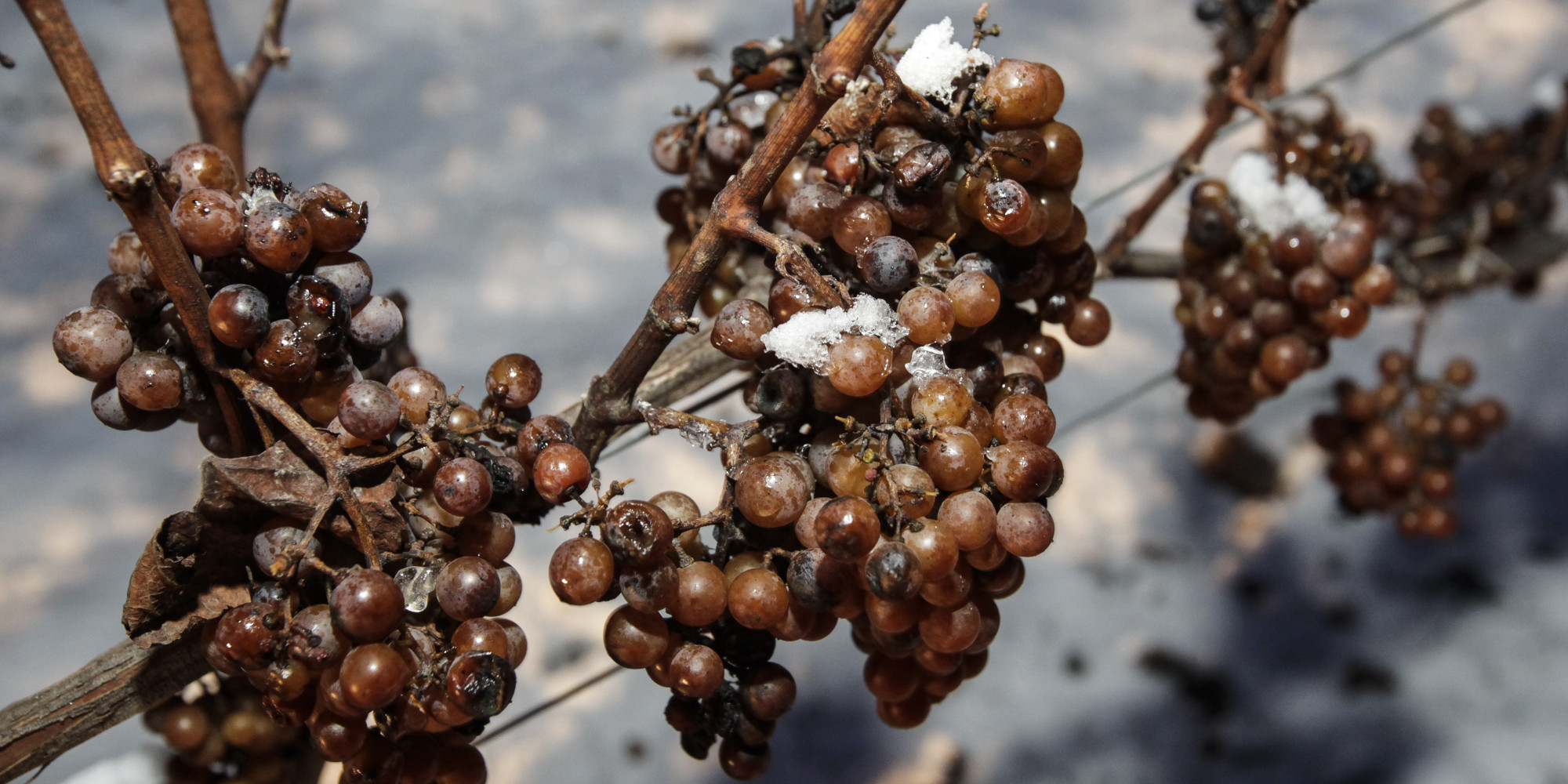How is Ice Wine made?
In Ontario, Ice wine must be made from approved grape varieties; the most popular are Vidal Blanc, Riesling and Cabernet Franc. Some small lots include Gewürztraminer, Chardonnay and Cabernet Sauvignon.
The season starts with netting the grape vines in the autumn, to protect the grapes from being devoured by birds. Grapes are left on the vine until a sustained temperature of -8°C or lower is reached (sometime between December and February). During the time between the end of the growing season and harvest, the grapes dehydrate, concentrating the juices and creating the characteristic complexities of Ice wine.
Grape growers and wineries carefully watch the weather, looking for an optimum stretch of temperatures between -10°C and -12°C. This range will produce very sweet juice in the range of 35°Bx to 39°Bx (degrees Brix, a measurement of sugar). Typically, a period of at least six hours is needed to harvest and press the grapes—usually during the night. Many wineries harvest by hand.
While still frozen, the harvested grapes are pressed, leaving most of the water behind as ice. Only a small amount of concentrated juice is extracted. Juice yields for Ice wine grapes are much lower than for table wines—only 15% of the expected yield for grapes harvested for table wines. The juice is very sweet and can be difficult to ferment. High sugars can create a hostile environment for the yeast, and fermentation stops early, leaving relatively low alcohol and high sugar levels in the finished wine.
Ice wine production is regulated in Ontario under the VQA Act and regulations. Strict standards are monitored by VQA inspectors, from vineyard to the bottle. Rules cover grape varieties, harvest procedures, winemaking and testing before the wine is released. No wine may use the term “Ice wine” on its label unless it is certified by VQA Ontario.

